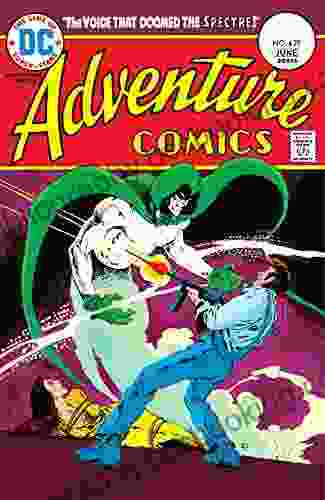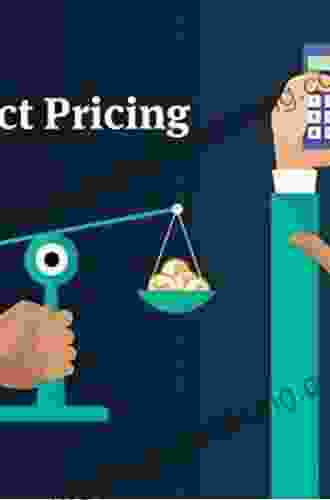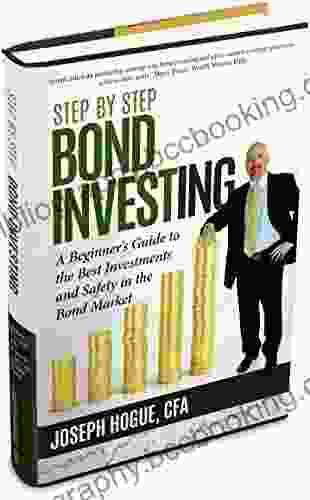The Ultimate Guide to Pricing Products and Services

Pricing is one of the most important decisions you'll make for your business. It can have a major impact on your sales, profits, and customer satisfaction. But how do you know what to charge for your products or services?
5 out of 5
| Language | : | English |
| File size | : | 9509 KB |
| Text-to-Speech | : | Enabled |
| Enhanced typesetting | : | Enabled |
| Word Wise | : | Enabled |
| Print length | : | 415 pages |
| Screen Reader | : | Supported |
There is no one-size-fits-all answer to this question. The best pricing strategy for your business will depend on a number of factors, including your target market, your competition, and your costs. However, there are some general principles that you can follow to help you determine the right prices for your products or services.
1. Understand your target market
The first step to pricing your products or services is to understand your target market. Who are these people? What are their needs and wants? How much are they willing to pay for your products or services?
Once you have a good understanding of your target market, you can start to think about what prices they would be willing to pay. You can do this by conducting market research, talking to potential customers, and looking at what your competitors are charging.
2. Research your competition
It's also important to research your competition when pricing your products or services. What are they charging for similar products or services? How do their prices compare to yours? You need to make sure that your prices are competitive, but you also need to make sure that you're not pricing yourself out of the market.
You can research your competition by visiting their websites, talking to their customers, and reading reviews.
3. Calculate your costs
Before you can set prices, you need to know how much it costs you to produce your products or services. This includes the cost of materials, labor, and overhead. Once you know your costs, you can start to think about how much you need to charge to make a profit.
It's important to factor in all of your costs, including both fixed costs and variable costs. Fixed costs are those that don't change depending on your production volume, such as rent and insurance. Variable costs are those that do change depending on your production volume, such as the cost of materials and labor.
4. Set your prices
Once you have considered all of the factors above, you can start to set prices for your products or services. There are a number of different pricing models that you can use, including:
- Cost-plus pricing: This model involves setting your prices based on your costs, plus a desired profit margin.
- Value pricing: This model involves setting your prices based on the value that your products or services provide to customers.
- Competitive pricing: This model involves setting your prices based on the prices of your competitors.
The best pricing model for your business will depend on a number of factors, including the nature of your products or services, your target market, and your competition.
5. Negotiate with customers
Once you have set your prices, you may need to negotiate with customers. This is especially true if you're selling high-priced products or services. Be prepared to offer discounts or other incentives to customers who are willing to pay less.
However, it's important to remember that you should never sacrifice your profit margin. If you're not making a profit, you won't be able to stay in business.
Pricing products and services is a complex process, but it's essential for the success of your business. By following the principles outlined in this guide, you can make sure that you're setting prices that are both competitive and profitable.
5 out of 5
| Language | : | English |
| File size | : | 9509 KB |
| Text-to-Speech | : | Enabled |
| Enhanced typesetting | : | Enabled |
| Word Wise | : | Enabled |
| Print length | : | 415 pages |
| Screen Reader | : | Supported |
Do you want to contribute by writing guest posts on this blog?
Please contact us and send us a resume of previous articles that you have written.
 Book
Book Novel
Novel Page
Page Chapter
Chapter Text
Text Story
Story Genre
Genre Reader
Reader Library
Library Paperback
Paperback E-book
E-book Magazine
Magazine Newspaper
Newspaper Paragraph
Paragraph Sentence
Sentence Bookmark
Bookmark Shelf
Shelf Glossary
Glossary Bibliography
Bibliography Foreword
Foreword Preface
Preface Synopsis
Synopsis Annotation
Annotation Footnote
Footnote Manuscript
Manuscript Scroll
Scroll Codex
Codex Tome
Tome Bestseller
Bestseller Classics
Classics Library card
Library card Narrative
Narrative Biography
Biography Autobiography
Autobiography Memoir
Memoir Reference
Reference Encyclopedia
Encyclopedia Martin Kemp
Martin Kemp Jonathan Maberry
Jonathan Maberry Stephen Bailey
Stephen Bailey Julie Flavell
Julie Flavell Ingrid Bayer
Ingrid Bayer Ian Condry
Ian Condry Jack E Bryer
Jack E Bryer Robert Gaudi
Robert Gaudi Lila Shanti
Lila Shanti Sarah Mitchell Hansen
Sarah Mitchell Hansen Hp Newquist
Hp Newquist Hugh P Mckenna
Hugh P Mckenna Rick Dedonato
Rick Dedonato Richard Bellman
Richard Bellman Jay Caspian Kang
Jay Caspian Kang Izabelle Winter
Izabelle Winter Owen Davis
Owen Davis Julian Gough
Julian Gough Inder Malhotra
Inder Malhotra Owain Johnson
Owain Johnson
Light bulbAdvertise smarter! Our strategic ad space ensures maximum exposure. Reserve your spot today!
 David MitchellFollow ·6.3k
David MitchellFollow ·6.3k Jesus MitchellFollow ·8.5k
Jesus MitchellFollow ·8.5k Morris CarterFollow ·8.7k
Morris CarterFollow ·8.7k Jay SimmonsFollow ·10.7k
Jay SimmonsFollow ·10.7k Natsume SōsekiFollow ·19.7k
Natsume SōsekiFollow ·19.7k Langston HughesFollow ·11k
Langston HughesFollow ·11k Vic ParkerFollow ·15.2k
Vic ParkerFollow ·15.2k W. Somerset MaughamFollow ·6.8k
W. Somerset MaughamFollow ·6.8k

 Luke Blair
Luke Blair101 Amazing Facts About Australia: A Journey Through the...
A Literary Expedition Unveiling the Treasures...

 Harry Hayes
Harry HayesWitness the Velocity and Legacy of the Scarlet Speedster:...
Delve into the Lightning-Charged...

 Stan Ward
Stan Ward101 Amazing Facts About Ancient Egypt: Unraveling the...
: A Timeless Realm of Wonder Ancient Egypt, a...

 Stephen King
Stephen KingEscape into Adventure: Unveil the Secrets of Adventure...
In the annals of comic book history,...

 Forrest Blair
Forrest BlairThe Oxford Dog Training Company Presents: A Holistic...
In the realm of dog...
5 out of 5
| Language | : | English |
| File size | : | 9509 KB |
| Text-to-Speech | : | Enabled |
| Enhanced typesetting | : | Enabled |
| Word Wise | : | Enabled |
| Print length | : | 415 pages |
| Screen Reader | : | Supported |














